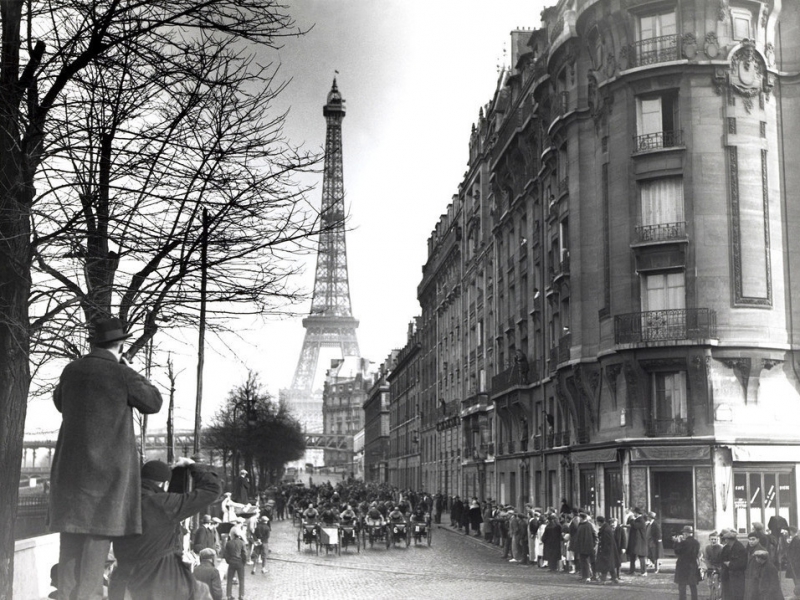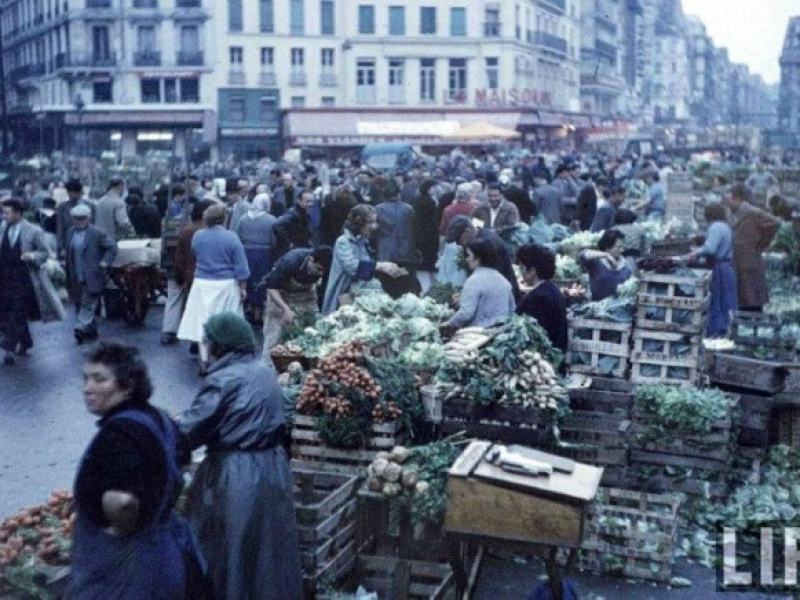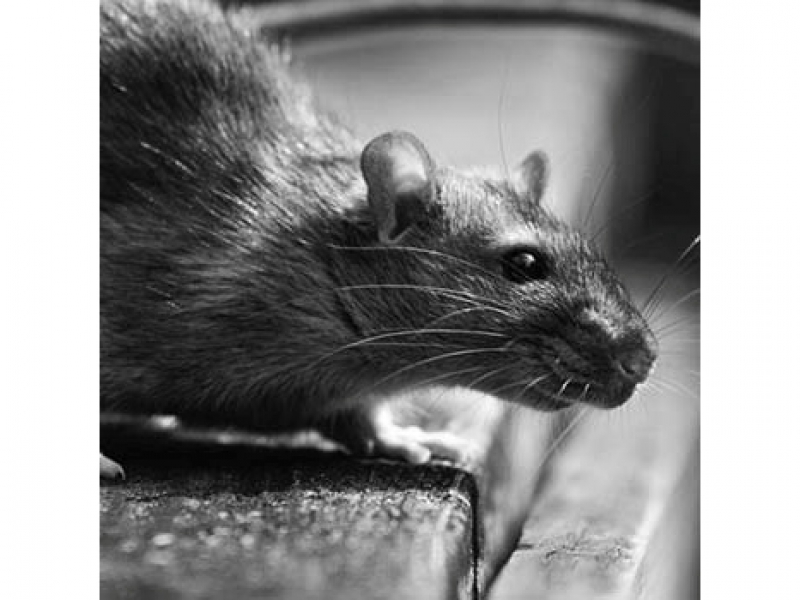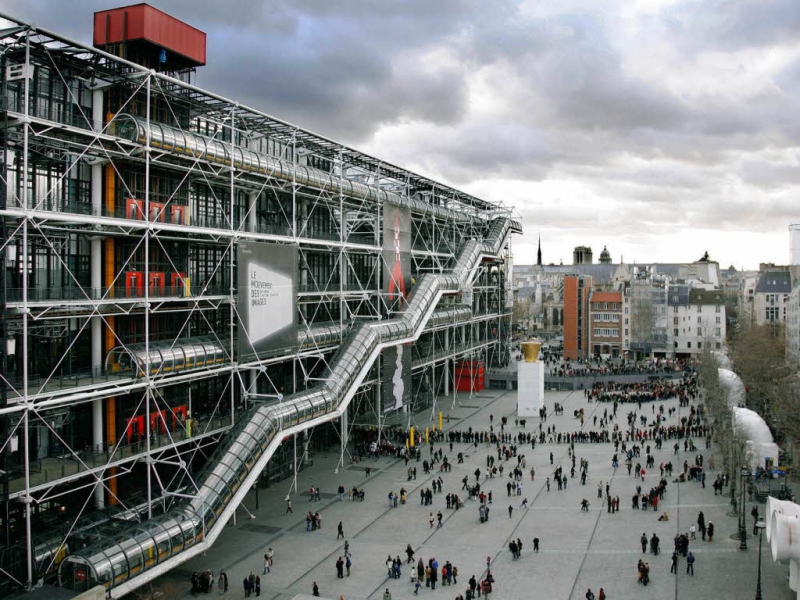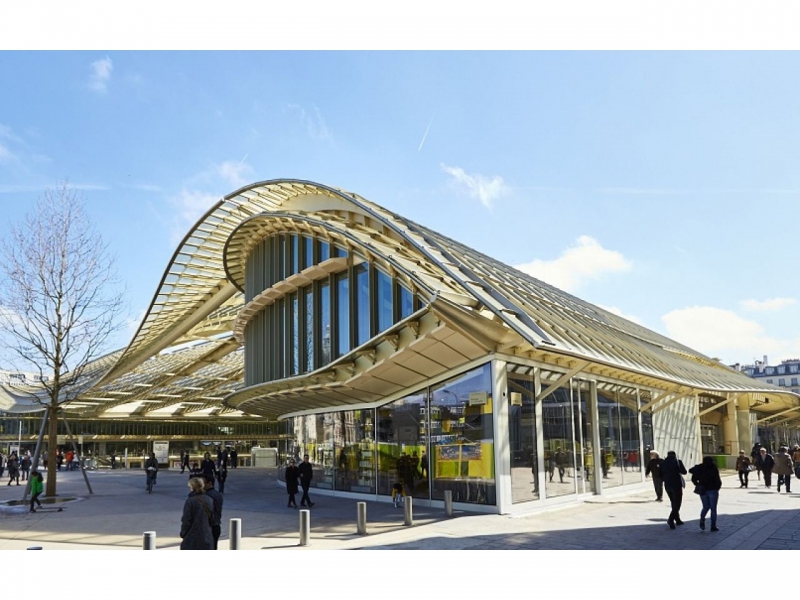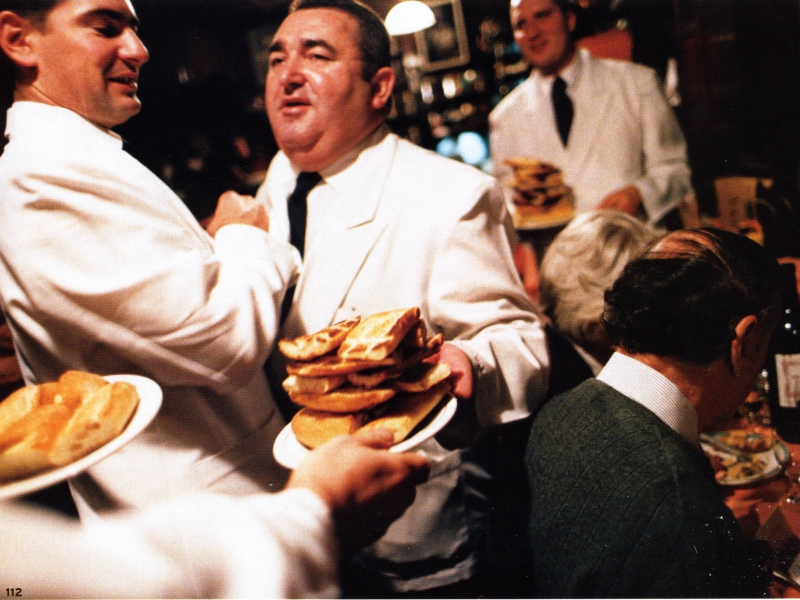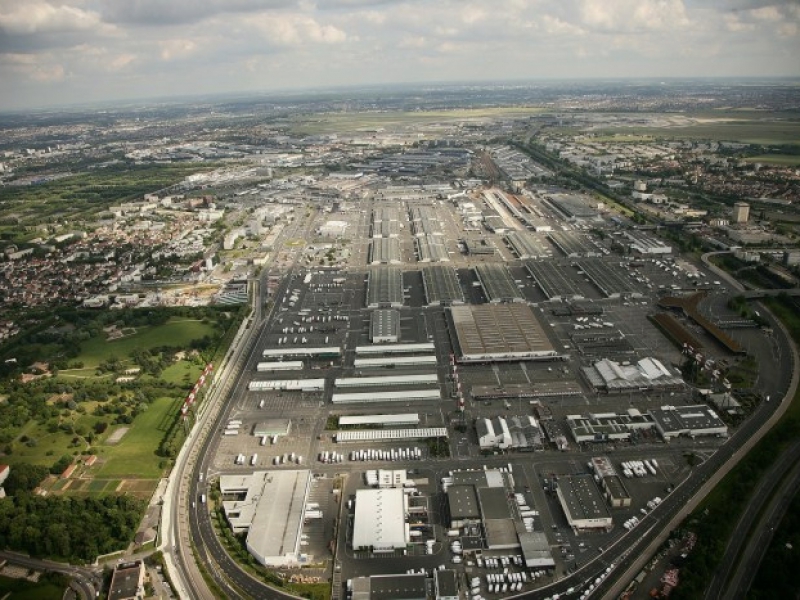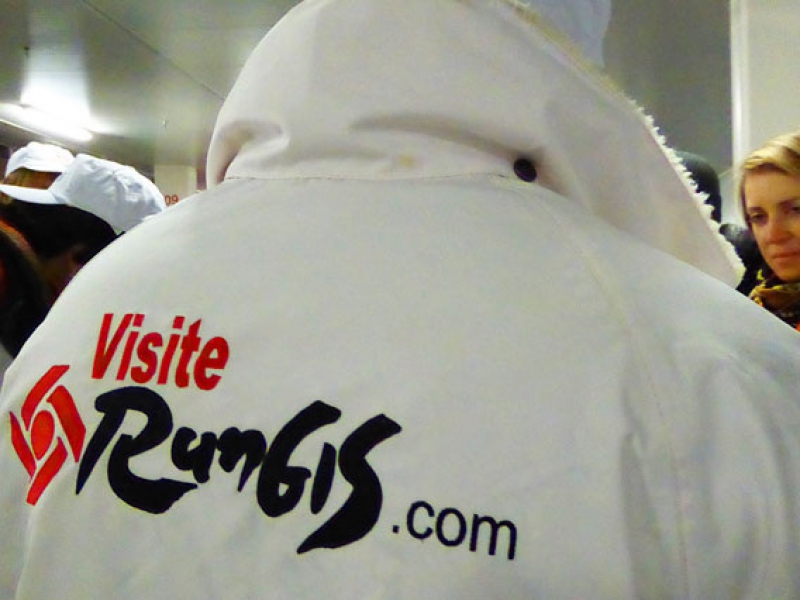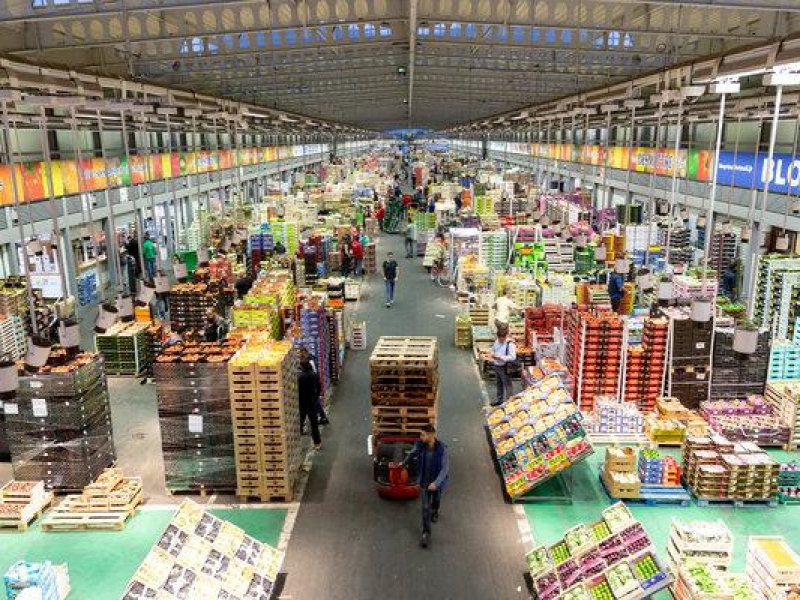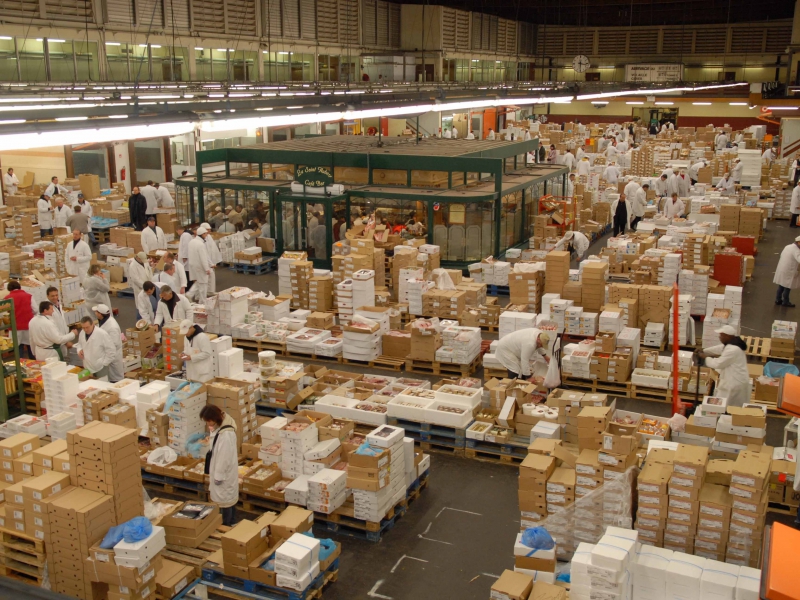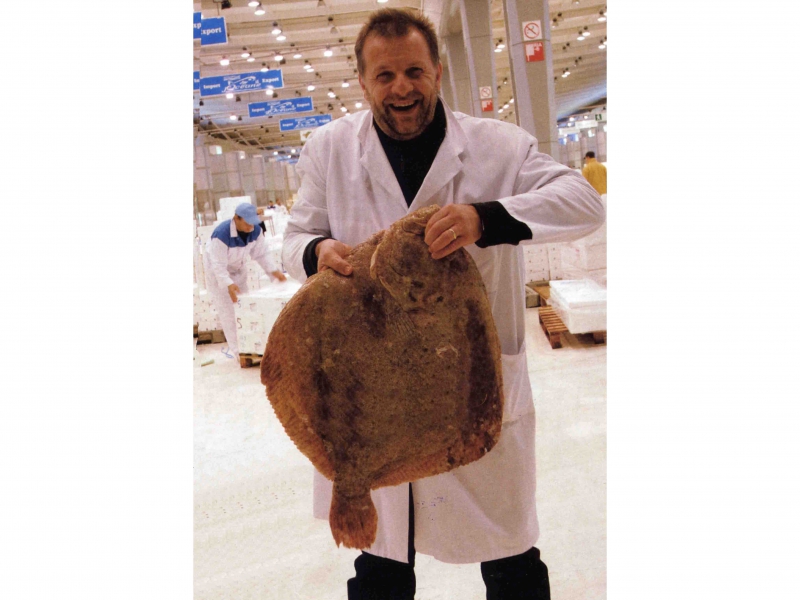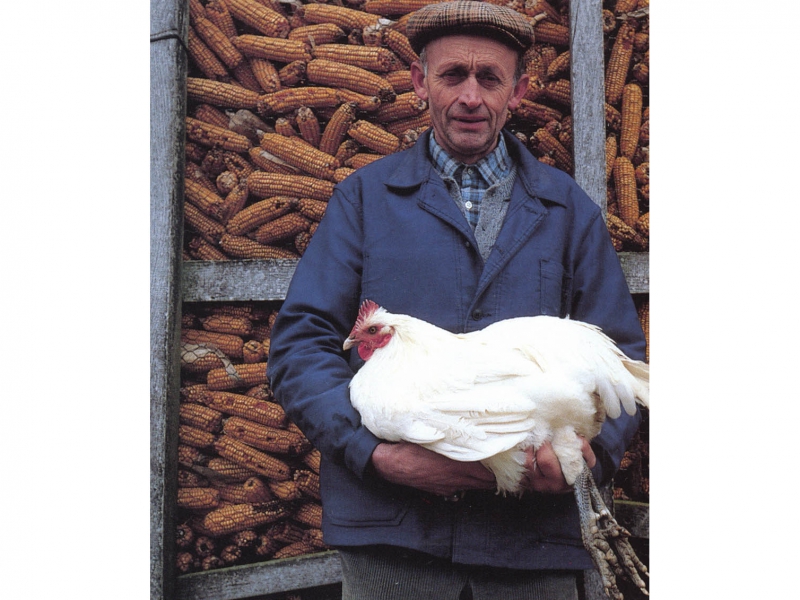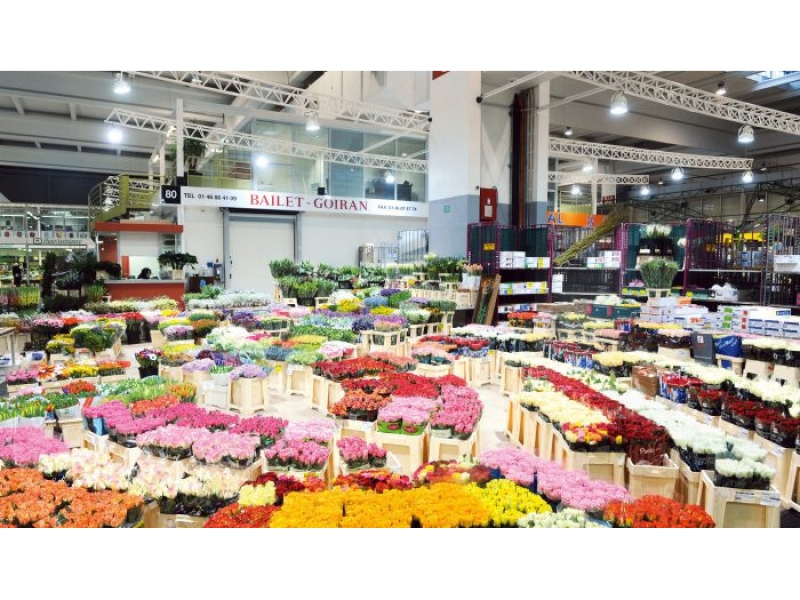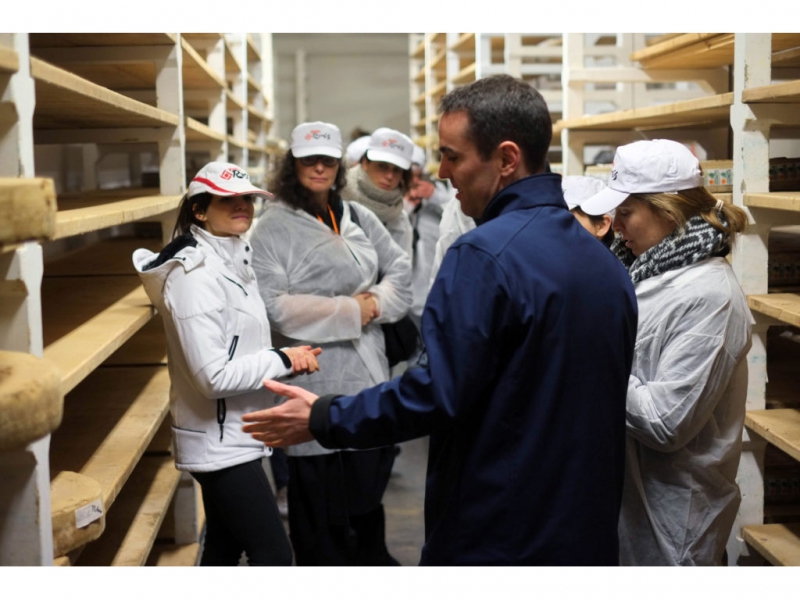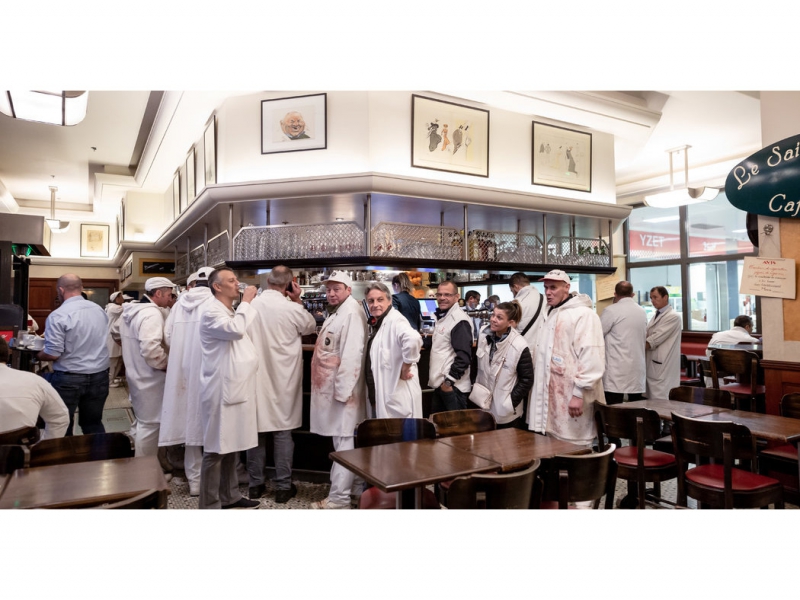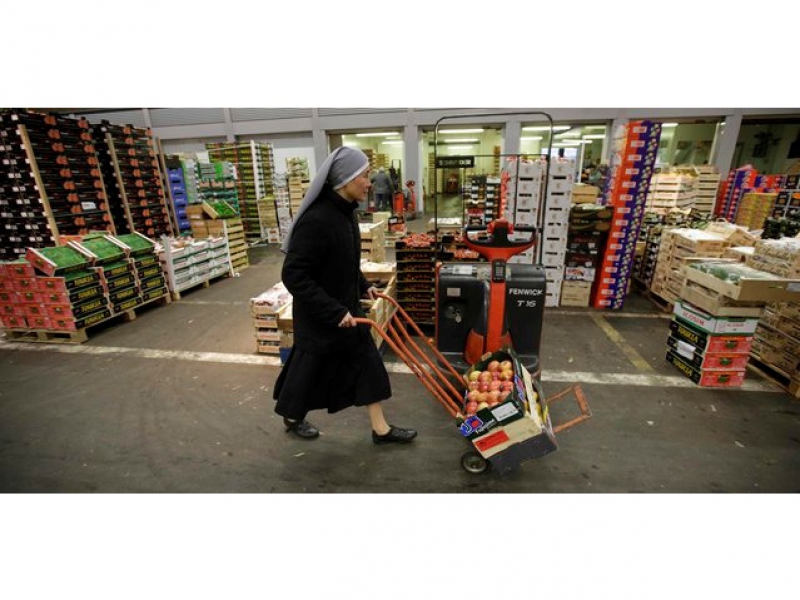The area in Paris known as LES HALLES traces its beginnings as a marketplace as far back as the 12th century, when King Louis 8th took control of the neighborhood. Initially dry goods were sold here, but food stalls were added over the years, and by the end of the 16th century LES HALLES was the pulsating heart of the city. That also coincided with the opening nearby of the grand Eglise Saint-Eustache, one of the most visited churches in Paris.
The market grew and thrived until 1971, when President Georges Pompidou ordered its demolition and relocation to the southern Paris suburb of RUNGIS.
Parisians were devastated to see it go, but it was probably a good decision as the area was hopelessly overcrowded. Delivery trucks could no longer maneuver, the area sewer system was woefully inadequate, and to top it off the streets were infested with rats – often competing with human scavengers for fruit scraps and squashed fish heads on the ground.
And while it made sense to relocate the market, what to me made no sense at all was the architectural massacre of the heart of Paris.
Several things happened at the same time. First the Paris metro system and the suburban commuter-serving RER train network rerouted lines from all directions to converge underground at LES HALLES. Once, completed, this left a gaping hole which then President George Pompidou decided to fill with a legacy-defining project: the Renzo Piano-designed POMPIDOU CENTER, a mammoth post-modern structure whose mechanical “guts” were all on the exterior. The aesthetic abuse continued with construction of a cliché-ridden, universally reviled underground shopping center called LE FORUM DES HALLES.
At the end of last year, a giant modern curving umbrella covering a new shopping center the size of THE PLACE DES VOSGES was completed. Perhaps its purpose was to heal the architectural carnage of the past 50 years. Did it work? Check out the image. You decide.
Call me crazy, but I think that modern architecture and design should be built as far from the historic center of Paris as possible.
And I may not be alone. As a French architectural critic recently stated, “It isn’t ugly. The curves are agreeable. It isn’t too aggressive.” That sure sounds like faint praise to me, like saying, “Hey, you don’t sweat much for a fat guy.”
My advice: Take a walk by the Centre Pompidou, but give at least half a day to the RUNGIS MARKET. This isn’t high on the list of Paris tourist attractions, but if you’re willing to get up before dawn, can brave the refrigerated food pavilions, and don’t mind being in proximity to blood and animal parts, Joanne and I will guarantee you an eye-opening learning experience.
You can go by Metro line #7 or by train. Be advised however, that the Rungis station is a couple blocks from the market and you may not feel entirely safe walking that distance in the dark. Maybe take an UBER.
As you might expect of Parisians, the RUNGIS MARKET is 100% food…no dry goods here.
Wear some good walking shoes, because the size of the market is a jaw-dropping 578 ACRES (bigger than Monaco). It is organized by halls, or “pavilions” – about 20 of them – each larger than a Costco store. Rungis is a city unto itself, with its own police force, banks, post office and at least 19 full-fledged restaurants, not counting perhaps a hundred food stalls.
Each pavilion has its own specialty – one for flowers, one for cheese, one for beef. Lamb gets its own pavilion, as does pork, game and poultry. Then there’s my favorite (not Joanne’s – most definitely NOT Joanne’s): THE TRIPERIE, dedicated 100% to offal, those parts of the animal that you’ll never see at Lund’s, but are integral to French cuisine. Plus, the floors were slippery – not from water, but from…you know what.
How refreshing it was to visit the fruit and vegetable pavilion next. People first eat with their eyes, and nobody understands that better than the French. The produce merchandising and displays are stunning. Cameras are allowed.
Over 400 different cheeses are represented in the cheese pavilion, and not just from France alone. They range from bite-sized pucks to wheels that could fit on a Mack Truck.
The seafood pavilion was Joanne’s favorite (I’ll stick with the Triperie), as the fishermen deliver their catch around 4:00 AM to eagerly awaiting buyers, many of them restaurant chefs. The local fish you see was swimming just a few hours earlier.
In my July 28, 2016 post (“I’m a Bresse Man”), I touted the chicken from Bresse, France as the best in all of the world. Well, the poultry pavilion is the center of the world for distribution of the prized bird, although I’m not certain that they can be sent to anyplace besides France. Much to my continued disappointment, they are not available in the United States. But that night Joanne and I dined on…you guessed it.
We ended our visit at the brilliant flower pavilion by watching container after container of flowers of all kinds arriving. Most containers, but not all, seemed to come from Holland and some weren’t even removed from their airline containers before heading out the door, presumably to another aircraft.
Finally, if you choose to visit the RUNGIS MARKET, there are tours available. Joanne and I, and one of our Parasole partners, VP of Marketing Kip Clayton, did the tour on our own and loved each and every step. But it might also be interesting to take a guided tour.
Our morning was topped off with double espressos alongside a line of white-coated butchers – not having espresso, but something stronger after a morning of hacking away with a meat cleaver.
As we left the market, we saw the clergy wheeling out a crate of apples.
All was well.
WTF
PHIL
